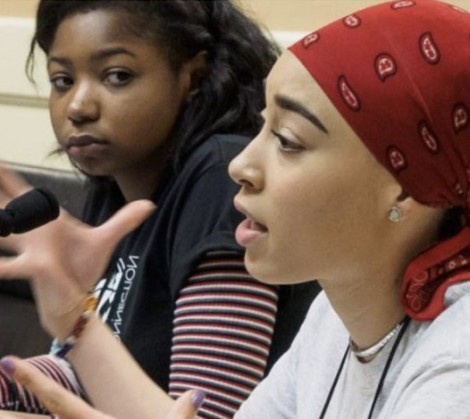Overview
The Trust aims to provide children and youth who have experienced disruption or instability in their homes with the support, resources, skills, and knowledge they need to become healthy, self-sufficient, resilient, and successful adults.
The Trust’s Foster Youth grantmaking addresses four strategies – stable homes, physical and mental health, education, and preparation for independence – which collectively support the healthy development and success of children and youth who are currently or formerly in foster care or whose parents can no longer care for them.
Families and communities are included in the Trust’s grantmaking to support foster youth, as part of a holistic approach to enrich the quality of life, promote self-sufficiency, and assist individuals in achieving their highest potential.
Much of the Trust’s Foster Youth grantmaking will be devoted to direct services for individuals, families, and communities, but the Trust’s grantmaking will also advance the work of organizations engaged in research and communication initiatives that raise awareness about the issues facing foster youth, and organizations that develop and advocate for policies and practices that effectively address these issues.
Focus Population
The focus population for this program area includes children and youth who are currently, or have been, in the foster care system; children and youth who may not have entered the formal foster care system, but who live with relatives or other caregivers because their parents are either absent or unable to care for them; homeless youth; and unaccompanied immigrant youth.
Adults who care for or work with youth who experience disruption or instability in their homes (e.g., caregivers, caseworkers, advocates, etc.) are also a key population to be supported through the Foster Youth program area.
 Credit: California Youth Connection
Credit: California Youth Connection
Acknowledging that there are particularly vulnerable subpopulations of foster youth/homeless youth (e.g., LGBTQ youth, youth of color, pregnant and parenting youth, victims of sex trafficking) and that some of these subpopulations are overrepresented in the child welfare system (e.g., LGBTQ youth, Native youth, African-American youth), the Trust’s grantmaking may include organizations that provide tailored support to these subpopulations, or that are working to address these disproportionalities.
Strategies
The Trust’s grantmaking in the Foster Youth Program Area addresses four broad goals, which collectively support the healthy development and success of children and youth who are currently or formerly in foster care or whose parents can no longer care for them:
The Trust does not fund
- Nonprofit social service providers whose work with adults may result in the prevention of children being placed in foster care, but whose work is not explicitly focused on preventing such placements. For example, an organization that helps adults with substance abuse issues, but not for the explicit purpose of preventing the placement of children in foster care, would not be eligible for funding, but an organization that provides comprehensive services to families, including treatment for substance abuse, with an explicit goal of creating healthy families and parents that have the skills and capacity to care for their children would be eligible
- Organizations primarily providing emergency material relief, such as food, clothing, or overnight shelter
- Organizations lacking a track record of achieving results toward at least one of the four strategies outlined above
Successful Applicant Organizations
- Specifically address one or more of Trust's Foster Youth strategies described above
- Incorporate recognized youth development principles and best practices
- Empower youth and develop youths’ capacity for leadership and self-advocacy (e.g., organizations involve youth in decision-making and program planning)
- Support the development of long-term relationships between youth and adults and among youth peer groups
- Emphasize youths’ strengths and assets
- Understand and honor the principles of trauma-informed care


